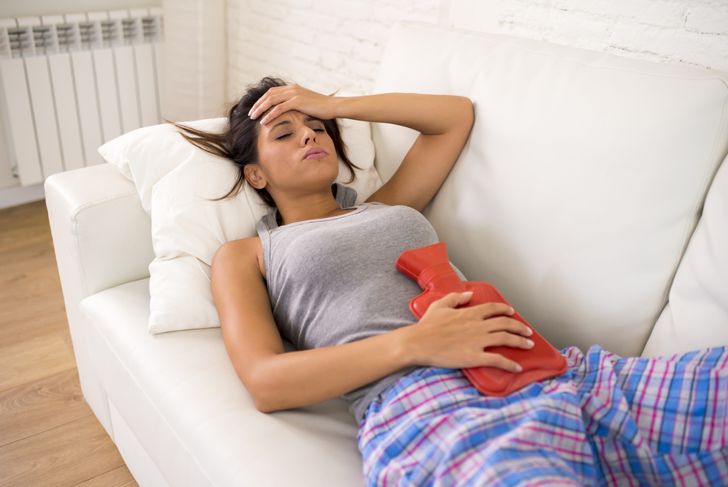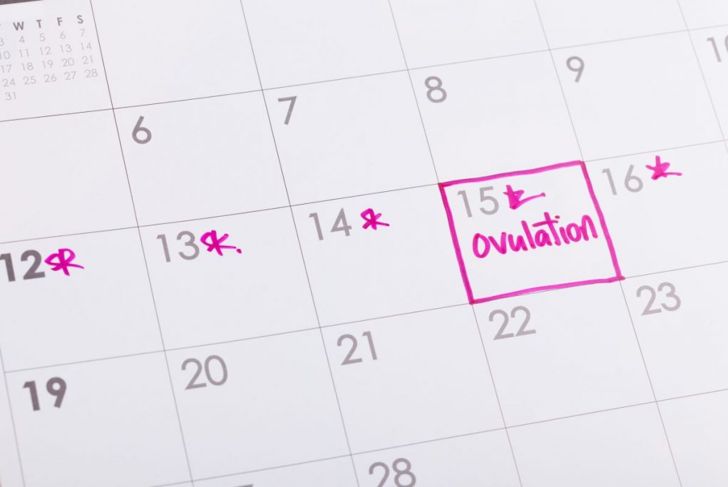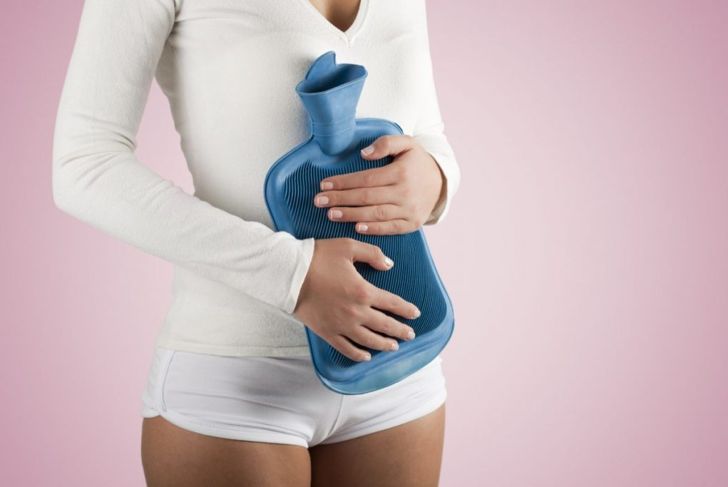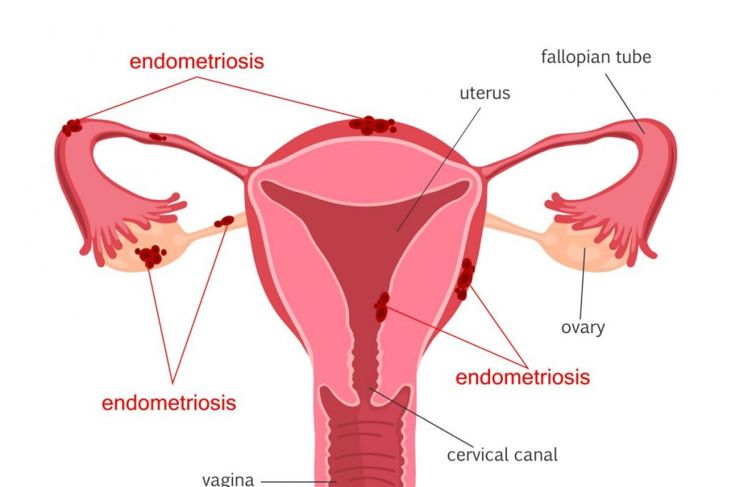Most women are more than familiar with discomfort just before their menstrual cycle. About 90% of the female population experiences the monthly bloating, headaches, cramping, breast tenderness, and moodiness that announces the arrival of their period. However, one in five women also experiences a dull, mid-cycle pain called mittelschmerz about two weeks before the onset of their menstrual cycle. In most cases, this not a serious issue and does not require medical intervention. Gynecologists consider it a normal side effect of menstruation unless other symptoms accompany the pain.
What Causes Mittelschmerz?
Mittelschmerz is a German word that means “middle pain.” During ovulation, the ovaries release a mature egg as a normal part of the menstrual cycle. This release usually happens sometime between ten and 16 days before the monthly period begins. Before release, the egg develops in the ovary, surrounded by follicular fluid, a yellowish liquid rich in hormones. Researchers have not discovered a cause, but they have theories. As the egg grows, it stretches the surface of the ovary. This stretching also causes the egg follicle to begin releasing its fluid, along with small amounts of blood, which irritates the lining of the abdomen and causes the pain.
Symptoms
Mittelschmerz usually occurs on one side of the lower abdomen or the other and may switch sides every other month or occur on the same side for several consecutive months. Some women describe the pain as a dull, cramp-like sensation. Others say they experience more of a sharp twinge that comes on suddenly. The pain may last anywhere from a few minutes to several hours, or continue for a few days. Occasionally, there is a small amount of vaginal bleeding, as well.
How to Identify Mittelschmerz
Mittelschmerz is unique to each woman who experiences it. The first occurrence may be early, around the time an adolescent woman begins to menstruate. The majority of women who experience the pain are under the age of 30. Like the menstrual cycle itself, mittelschmerz may occur about the same time each month, but for some, it is more sporadic and unpredictable. If a woman’s ovulation is on a regular cycle instead of an irregular one, it is easier to predict when the pain will occur, usually just before ovulation begins.
Tracking Ovulation Pain
To determine whether the pain is due to mittelschmerz, some gynecologists recommend women track their ovulation each month. This tracking begins with documenting the day the pain begins, the day it ends, and how much time elapses before the first day of her menstrual cycle. The woman should also note where she is feeling the pain, whether it alternates, and if she feels it in the same location each month. The pain may alternate on a regular cycle between the right and left ovary or feel more random. The severity of the pain, bleeding, or any vaginal discharge should also be noted.
Additional Symptoms of Ovulation
Not all women experience symptoms when they ovulate, and mittelschmerz is just one of the possible symptoms. The secretion of a hormone called progesterone causes the basal body temperature to increase. It also sends signals to the uterine lining to prepare for embryo implantation by thickening and taking on a spongy texture. Cervical mucus increases, so a woman may experience a discharge during ovulation as well. Some women also experience a change in their saliva due to estrogen and progesterone levels, though this symptom usually goes unnoticed with daily dental hygiene.
Treatment
Mittelschmerz is not a disease or a sign of a serious condition. In most cases, medical treatment is not necessary. Some women find relief from intense pain using over-the-counter pain relievers. Warm compresses, a heating pad, and soaking in a warm bath may also help relieve pain by increasing blood flow and relaxing muscles. If a woman experiences a higher level of discomfort or the pain changes in intensity or frequency, it is important to determine whether the issue is mittelschmerz or a symptom of a different condition.
When to Seek Medical Attention
If ovulation pain becomes more intense or lasts longer than a few days, medical professionals recommend seeking the advice of a gynecologist or a general practitioner. A fever that exceeds 100.4 degrees, pain during urination or sex, a foul-smelling discharge, nausea, vomiting, and swelling of the abdomen warrant medical attention. Additionally, pain settling in the lower right side of the abdomen could indicate appendicitis. If vaginal bleeding increases beyond spotting, or if there are sudden issues that appear that don’t normally occur during ovulation, contact a physician.
Testing and Exams
A gynecologist will likely perform a pelvic exam. In some cases, he or she may also do an abdominal ultrasound or transvaginal pelvic ultrasound to determine the reason for increased pain or bleeding before the menstrual cycle. The physician performs these tests to rule out other, more serious conditions. If the pain or bleeding is not a symptom of another condition but a result of mittelschmerz, the doctor may prescribe birth control pills to prevent ovulation.
Other Conditions that May Cause Ovulation Pain
Ovulation pain can sometimes be a symptom of other medical conditions. Some of these conditions interfere with fertility, preventing women from getting pregnant. Endometriosis, which affects the ovaries and fallopian tubes, is one of these conditions. One of the primary symptoms of the condition is pain during ovulation. Sexually transmitted infections can cause inflammation, as well as scarring around the fallopian tubes, which leads to ovulation pain. Women who have had a Caesarean section or an appendectomy may experience painful ovulation due to scar tissue buildup that restricts the ovaries or other organs.
Maintaining Reproductive Health
Understanding how the body behaves each month during ovulation and menstruation is key to maintaining a healthy reproductive system. Women can document dates and symptoms in a journal or record them in one of the many apps available. All women should have a yearly gynecological visit and discuss mittelschmerz symptoms and any issues that occur during their ovulation and menstrual cycles. Women’s health experts suggest women follow their gynecologist’s recommendations for pap smears to rule out cervical cancer or other issues.

 Home
Home Health
Health Diet & Nutrition
Diet & Nutrition Living Well
Living Well More
More




















